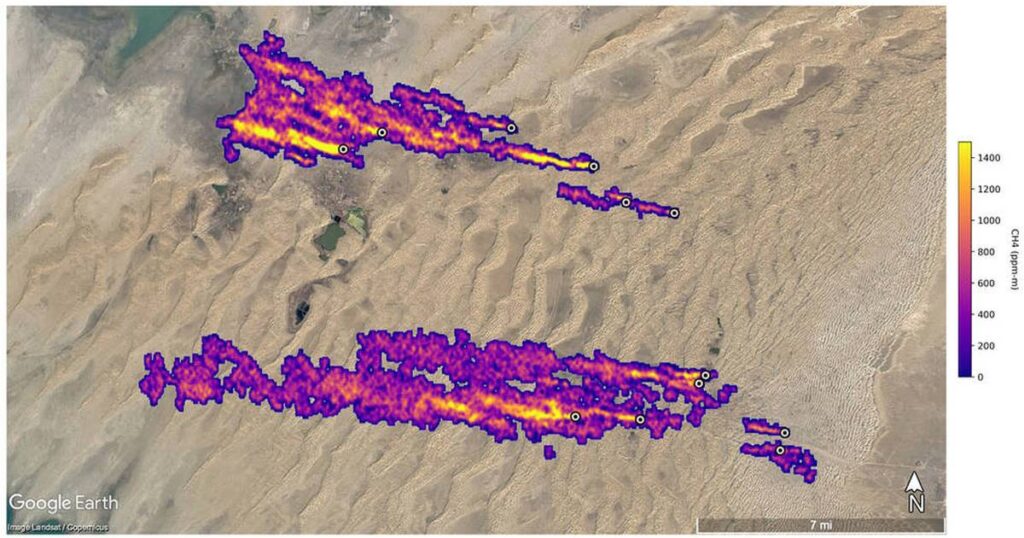NASA has discovered some of the worst methane emitters on Earth from space.
A mission to map important minerals in the world’s dust-producing deserts was already being carried out by NASA.
It was intended that the data from the Earth Surface Mineral Dust Source Investigation, or EMIT mission, would aid nations in better understanding how airborne dust influences the climate.
It turns out, however, that it is also capable of detecting high levels of methane, a strong greenhouse gas that contributes to global warming.
In the data collected since EMIT was installed on the International Space Station in July, scientists have identified more than 50 super-emitters throughout the world – but especially in Central Asia, the Middle East, and the southwestern US.
According to NASA, the infrastructure, machinery, and other mega emitters are typically found in the fossil fuel, waste management, or agricultural industries.
A large landfill south of Tehran, Iran, was one site that had a 4. 8 km long methane plume rising into the atmosphere.
NASA administrator Bill Nelson stated that controlling methane emissions is essential to preventing global warming.
This innovative new discovery “will not only help researchers better understand where methane leaks are occurring, but will also provide insight on how they may be addressed—quickly.”
Methane has an estimated 20-year global warming potential that is nearly 80 times greater than carbon dioxide, according to the United Nations Environment Programme.
And according to NASA, the advantages of scanning it from orbit are clear because the ISS can cover a significant portion of the world while also focusing on details as small as a soccer field.
“For years, NASA’s more than two dozen satellites and in-space instruments, including the International Space Station, have been crucial in identifying changes to the Earth’s climate. To quantify this powerful greenhouse gas and stop it at the source, EMIT is proving to be a crucial tool in our toolkit, according to Nelson.
Additionally, New Zealand is funding a space initiative that tries to reduce methane emissions.
MethaneSAT is the first space mission funded by the New Zealand government – in collaboration with the USA..
NASA discovers’super-emitters’ of methane in space

